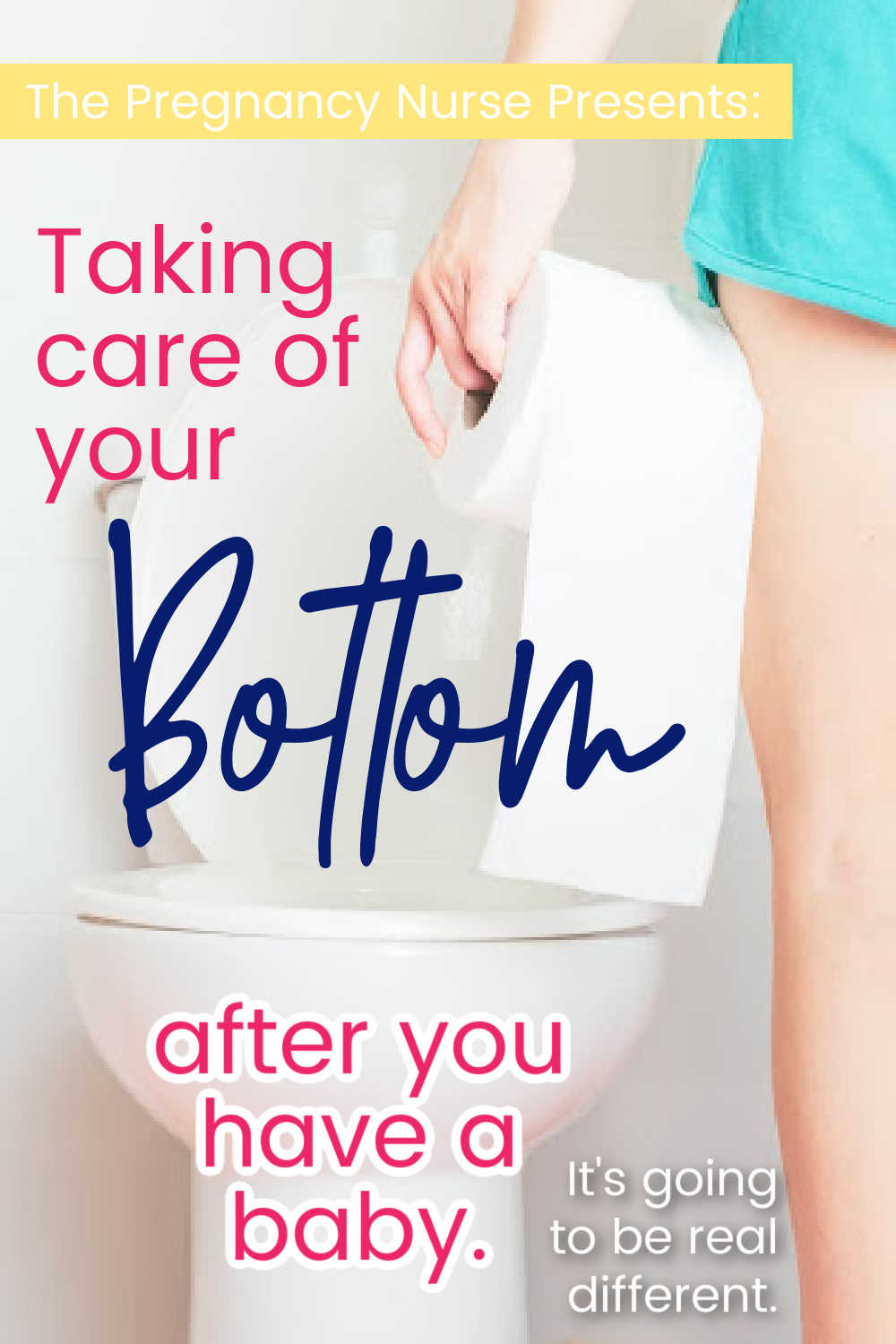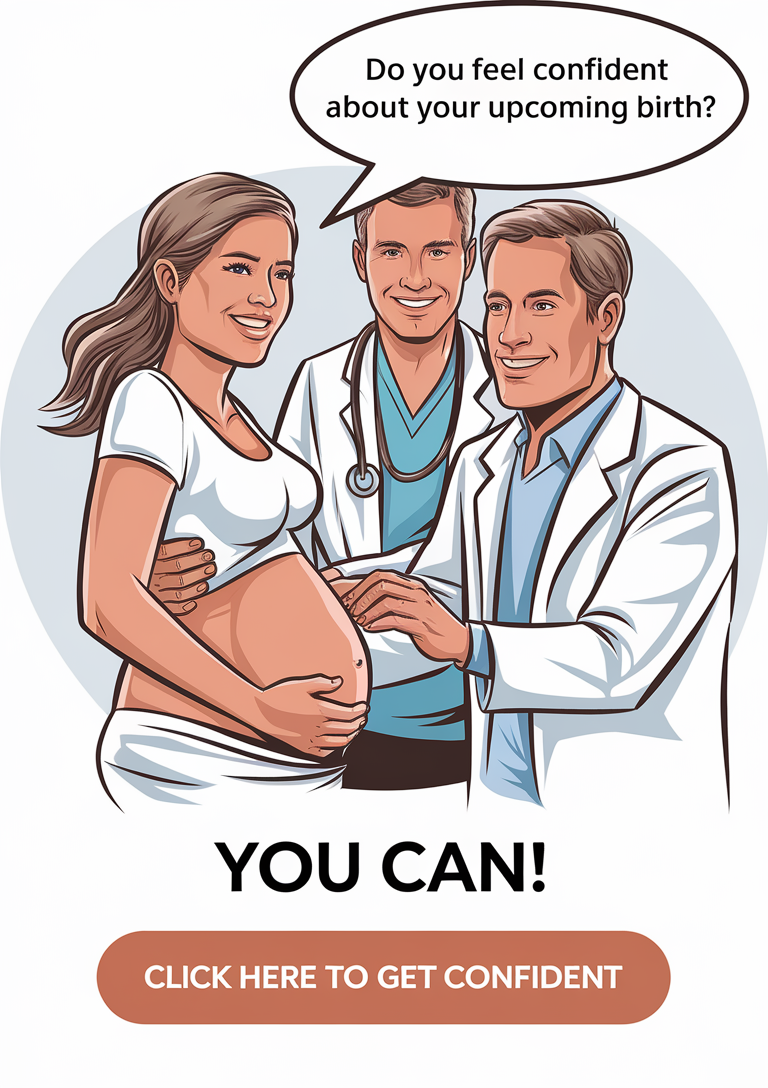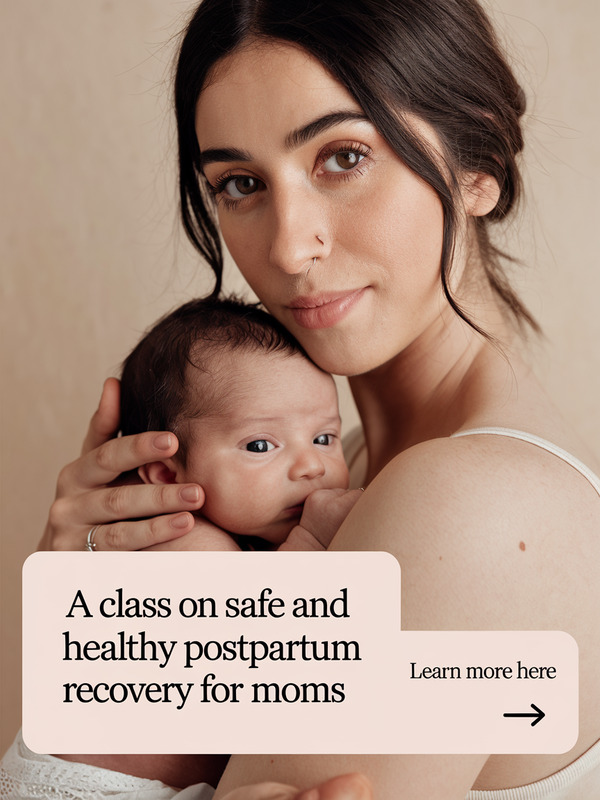How will you take care of your bottom and perineum (the area between your urethra and your rectum)? After you have a baby you’re going to take care of this area in a whole new way. I can show you what to expect so it’s not as foreign after the baby is born. Keep reading to get ready for life after baby!
Hi, I’m Hilary — The Pregnancy Nurse 👩⚕️. I have been a nurse since 1997 and I have 20 years of OB nursing experience, I am also the curly head behind Pulling Curls and The Online Prenatal Class for Couples. 🩺
As someone who’s followed thousands of moms into the bathroom after they’ve had their baby — I want to share with you what to expect.
If you’re just wondering what ELSE there is to expect at the hospital, be sure to check out my Online Prenatal Class for Couples. I go into details like this from your third trimester, until well after the baby is born. Be sure to check it out:
What Happens to Your Perineum at Delivery
When the baby comes out your birth canal — the tissues both in your vagina and perineum with swell and stretch. After delivery you will get up to restroom and learn how to take care of those tissues in a new way.
As a note: Sometimes your health care provider will cut you (that’s called an episiotomy) for a variety of reasons. Or, sometimes you will have a perineal tear as the baby comes out. Both are recoverable, but can sound pretty scary. My sister site Pulling Curls has a whole post on tearing at delivery.
The trauma to those tissues certainly varies, but most women need these products after delivery as they heal (and healing time will depend on the tissues trauma). So, even if you didn’t have any vaginal tears, your perineum will still likely be quite sore.
Pro Tip: The extra care of your bottom is normally just after a vaginal birth. A cesarean section patient will still bleed, but most likely won’t have all the swelling/needs from their perineal area after a vaginal delivery (unless they pushed and didn’t deliver through the birth canal).
I actually just did a podcast on this topic with a friend from Tiktok:
How to Take Care of Your Bottom after Baby
I have a whole video on how you take care of your bottom after baby — we’ll talk about those components after the video as well:
Supplies to Take Care of Your Bottom After Baby:
Heads up! 👀 There may be affiliate links in here – I might earn a smidge with your click. No cost to you, just good vibes! Check my boring stuff for deets.
- Mesh Underwear — That way you won’t have to wash your own underwear, also these keep the pads on and easy to change.
- Tucks Pads — These help with swelling in the area
- Dermoplast — This helps with pain and also itching once you start to heal.
- Large Pads (also, you can combine the undies and the pads with a depends-type product) — to take care of your bleeding that can take up to 6 weeks.
- Perineal Spray Bottle — to help clean yourself off on the toilet
Extra Tips for Perineal Care After Baby
Here are some pro tips on how to take care of your bottom after baby:
Cold
Using an ice pack, or cold pack or even just keeping tucks in your fridge can feel great. Nurses will likely recommend you keep an ice pack on for the first 24 hours. I recommend you ask to change it every 2-3 hours — it can help a lot!
Bleeding
You might be thinking you’ll bleed just like a normal period, but the bleeding is a LOT initially.
It is also not unusual to not be able to hold your urine as well the first couple of days (because that area is so stretched-out). So, a LARGE pad can help with that as well.
Make sure you change your pad every time you use the restroom, which will likely be fairly frequently.
Come join my postpartum care made easy class (it’s free) to learn more about what’s safe in regards to bleeding!
Post-Baby Hygiene Routine
- Remove the old pad and change underwear if necessary
- Do your business (pee or #2)
- Spray off with the peri wash bottle
- Use a washcloth or toilet paper to blot dry (don’t wipe)
- Put new sanitary pad in your panties
- Line that pad with tucks (witch hazel pads)
- Spray painful area with dermoplast or other first aid spray
Optional Step: Apply your ice packs
Pro Tip: You’re just spraying the outside of your vaginal opening, you’re not opening the birth canal and squirting up there. You may also want to refill your bottle if it feels good (or get a bidet attachment for your toilet) in those first days.
Grab my postpartum checklist to get prepared for life after baby:
We chatted about that first visit to the toilet in my podcast on transferring to postpartum.
You should apply a clean pad every time you use the restroom for those first few days.
Your nurse will likely show you how to do all these things and accompany you into the bathroom the first couple of times.
Note: Your nurse is VERY used to bringing you into the bathroom and being there while you pee. We do it with most every patient. So, don’t feel bad that they have to stay by you. We definitely want to be sure that you’re steady and feeling alright during that first time up.
SO, don’t feel like you have to memorize this. I just wanted to share it so that you weren’t caught surprised after you have your baby.
As you continue your healing process, you won’t do as many things in the bathroom, but the first days require extra attention (longer if you’ve had a severe tear)
What about a Sitz Bath?
Sitz baths are where you set up a big bag of water, and then use gravity to wash your perineal area after delivery with that larger volume of water. They can be really nice. Some like warm sitz baths and some like them cold. Whatever feels good is good for you.
I personally would LOVE a bidet attachment on my toilet — they easily set-up on your current plumbing.
What Having a Bowel Movement?
That first BM after baby can be a doozy. The entire process is still the same, but you can use the squirt bottle back towards your rectum as well.
Pro tip: Make SURE that you’re taking your stool softener after delivery so the first BM isn’t hard (this can hurt a LOT). Also include lots of whole grains, fresh fruits and veggies into your diet as well as plenty of water to keep your digestive system healthy (and stools soft).
Perineal Care After Delivery FAQ’s
If there is a lot of pain or soreness in that area it can contribute to feelings of baby blues and may increase it to postpartum depression, so make sure you’re taking care of yourself!
The main management plan for perineal tears varies by patient to patient. If you don’t feel like an over the counter pain reliever is doing anything (Tylenol or Advil) be sure to talk with your provider. However, most often they are trying to limit narcotic use after delivery
Everything will feel very different after delivery, so some gentle pelvic floor exercises or Kegel exercises are a good thing to start when you feel ready. It’s a good idea not to go too crazy with these, and make sure you’re giving your pelvic floor plenty of time to heal as well.
Making sure you’re getting plenty of fluids will help keep that area more healthy than other otherwise. Fluids can also help new moms breastfeed their new baby as well.
It’s up to you, as that part of you starts to feel better, and you’re bleeding less you may adjust. Most people do it at least for the first week?
Your vaginal discharge should start to slowly decrease through those first few weeks. If you find that it was tapering off, but then got larger, it could mean that you’re over-doing it — so spend more time with your feet up and resting. Most people say it takes 2-6 weeks to see the bleeding stop.
Your provider will encourage vaginal rest (meaning nothing your vagina) for at least six weeks to promote healing (remember you have open blood vessels in that area, so your chance of infection is high). Plenty of ways to still feel close to your partner during that time tho.
What people consider really heavy bleeding varies. If it is more than you had in the hospital I would call your provider to just be on the safe side.
It’s not unusual to have some clots come out. As long as they are smaller than a golf ball (and your overall bleeding isn’t increasing) most providers just encourage you to monitor it at home. But, any questions please do contact your provider.
I also have a podcast that shares the best ways NOT to tear and how to take care of yourself afterwards:
If you liked this post, I think you NEED to jump into The Online Prenatal Class for Couples. If you’re looking to get prepared for all the facets of before and after birth, you’ll love it.
Want to do a vibe check before diving into the whole thing with me? — check out my free labor pro tips. It’s your first step toward getting in the driver’s seat of your birth.









 What to Eat Before Your Pregnancy Glucose Test
What to Eat Before Your Pregnancy Glucose Test
